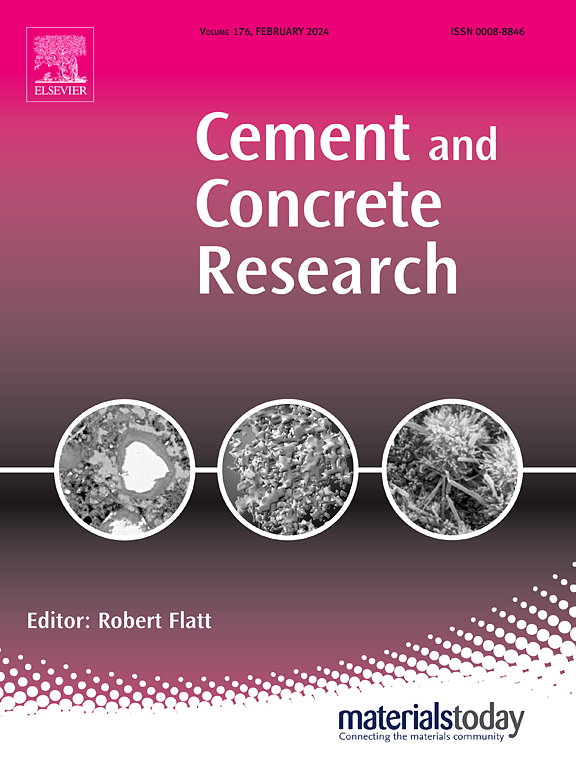对UHPC的线性-非线性拉伸蠕变机制的新见解:应力水平相关的蠕变-活性位点转变
IF 13.1
1区 工程技术
Q1 CONSTRUCTION & BUILDING TECHNOLOGY
引用次数: 0
摘要
本研究通过系统研究跨多个尺度的蠕变活性位点(控制蠕变行为的高应变微区)的分布和演化,阐明了不同应力水平下超高性能混凝土(UHPC)拉伸蠕变的微观力学根源。结果表明,在应力水平低于30%时,蠕变活性位点随机分布在整个试样中。C-S-H凝胶的滑移导致了基体和弱区(如界面过渡区和宏观缺陷)的同步变形速率。随着应力水平的增加(40% ~ 60%),蠕变活性位点集中在60 ~ 800nm宽的微裂纹中,弱区应变积累速率逐渐超过基体。当应力水平高于70%时,强化的应力集中和宏观缺陷触发断裂主导的非线性蠕变。该研究将微裂纹理论与C-S-H凝胶滑移机制结合起来,证明了从线性到非线性拉伸蠕变行为的发展源于应力水平相关的蠕变-活性位点转变。本文章由计算机程序翻译,如有差异,请以英文原文为准。
New insights into linear-nonlinear tensile creep mechanisms of UHPC: Stress level-dependent creep-active site transitions
This study elucidates the micromechanical origins of tensile creep in ultra-high performance concrete (UHPC) under various stress levels by systematically investigating the distribution and evolution of creep-active sites (high-strain micro-zones governing creep behavior) across multiple scales. Results reveal that, at stress levels below 30 %, creep-active sites are randomly distributed throughout the specimen. The slip of C-S-H gel induces synchronized deformation rates in both the matrix and weak zones (e.g., interfacial transition zone (ITZ) and macroscale defect). As stress levels increase (40 %–60 %), creep-active sites localize at 60–800 nm wide microcracks, with strain accumulation rates in weak zones progressively exceeding those in the matrix. At stress levels above 70 %, intensified strain concentrations in ITZ and macroscale defect trigger fracture-dominated nonlinear creep. This work unifies micro-crack theory and C-S-H gel slip mechanisms, demonstrating that the development from linear to nonlinear tensile creep behavior originates from stress level-dependent creep-active site transitions.
求助全文
通过发布文献求助,成功后即可免费获取论文全文。
去求助
来源期刊

Cement and Concrete Research
工程技术-材料科学:综合
CiteScore
20.90
自引率
12.30%
发文量
318
审稿时长
53 days
期刊介绍:
Cement and Concrete Research is dedicated to publishing top-notch research on the materials science and engineering of cement, cement composites, mortars, concrete, and related materials incorporating cement or other mineral binders. The journal prioritizes reporting significant findings in research on the properties and performance of cementitious materials. It also covers novel experimental techniques, the latest analytical and modeling methods, examination and diagnosis of actual cement and concrete structures, and the exploration of potential improvements in materials.
 求助内容:
求助内容: 应助结果提醒方式:
应助结果提醒方式:


